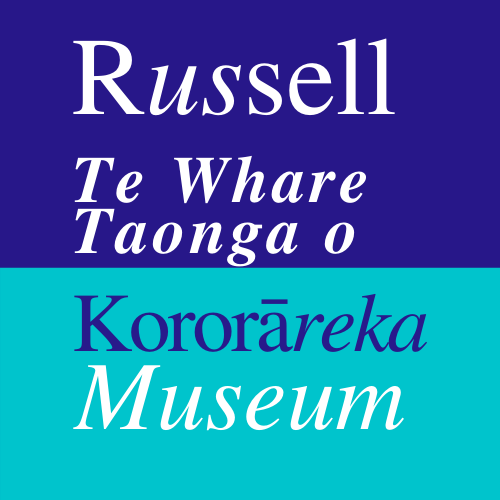Displays
Īpipiri
Russell Museum now has a great new exhibit on display for visitors to experience, an interactive digital map called Īpipiri. Īpipiri is the Māori name for the Eastern Bay of Islands, and the mapping table now joins Captain Cook’s Endeavour as a museum must see attraction. Great fun for the kids, its two animated re-enactments brilliantly bring to life how our region and its ecology were first formed and developed.
It also tells how violent and bloody reprisals were avoided in 1769 during Captain Cook’s first dramatic meeting with local Māori after the intervention of Tupaia, the famous Tahitian priest and navigator who was on board. The table adds a whole new storytelling dimension to the museum; the famous characters from our past come to life, telling their own stories and in so doing throws new light on the rich museum collection and the people and places it represents and illustrates.
One story line begins with Māori beliefs about creation and the formation of the solid world, the landmass of Aotearoa and Īpipriri. The appearance of the unique flora and fauna that developed later, the Polynesian voyagers who finally made it and settled here, the Europeans that followed and how our environment was forever changed by the animals and plants they brought with them. The second tells a story, only recently related, about how the British expedition of 1769 managed to remain in the Bay for several days unharmed after having shot and wounded a local rangatira. It explains that serious violence against the British sailors was only avoided by the peace-making intervention of Tupaia and the bonds formed through gift exchanges he facilitated. Tupaia had joined the expedition in Tahiti and his translation skills and understanding of local customs and protocols may have salvaged many another fraught situations from escalating into violence and death.
The table was made possible through Te Au Mārie Trust as part of Tuia 250 with funding from The NZ Lottery Grants Board, the Provincial Growth Fund and the Ministry of Culture & Heritage.
Māori
The Bay of Islands was settled by Māori in voyaging canoes almost a thousand years ago. Russell, known by its original name Kororāreka, was one of a number of small coastal settlements, whose numbers increased seasonally as inland Maori came to the coast to fish.
Originally occupied by Ngare Raumati and later Ngapuhi, the settlement had a sheltered anchorage. Its name Kororāreka, sweet penguin, came from a legend of a wounded chief calling for soup made from the boiled flesh of the Little Blue Penguin. “Ka reka te korora”, he said (how sweet is the penguin).
This section of the museum pays tribute to the foundational Maori heritage of the town. There is a small family waka and stone anchors, traditional weapons like taiaha and tewhatewha, stone adzes, fishing lures and Maori weaving – cloaks, and kete.
One case contains fine pounamu (greenstone), adzes, heitiki (neck ornaments) and mere (clubs). A patu paraoa (whalebone club) is an example from one of the earliest bicultural families whose descendants still live in the area today.
Explorers
Lieutenant James Cook gave the Bay of Islands its English name when he visited in 1769. He anchored off Motuarohia just around the Kororareka headland with a crew of scientists, botanists and Tupaia, a High Priest navigator from Polynesia. Impressed with what he found, he put the Bay of Islands on the map on his return to England.
Russell Museum’s ship wing highlights the strong maritime theme that runs through the town. The 1/5th replica model of Cook’s Endeavour is central but tribute is also paid to the French presence. Marion du Fresne anchored nearby in 1772, and Dumont d’Urville made three visits between 1824 and 1840. Russell Museum has a model of Dumont d’Urville’s ship originally called La Coquille and later Astrolabe.
The ship wing also traces Russell’s development as a port of call for coastal shipping before adequate roads linked Northland to the rest of New Zealand. The coastal steamer Clansman is represented by an oil painting by one of its masters.
Kauri gum, coal and manganese were exported from the Port of Russell and even today Russell wharf is an important gateway for visitors to the town.
Because of good reports from early European visitors, Russell became a popular base for visiting Pacific whalers who needed a base to pick up supplies, get repairs done, and give their men shore time.
For nearly a hundred years whalers, particularly American, visited the port. Kororareka changed to accommodate their needs with waterfront grog shops and brothels a feature. It earned the nickname Hell-hole of the Pacific. Russell Museum has whaling items – harpoons, flensing spades, oars and whale bones. There are examples of scrimshaw, baleen and a whale embryo.
Russell also had a nearby shore based whaling station at Whangamumu. The binoculars used to spot seasonally passing whales are on display together with a sample of whale oil.
Address
2 York Street,
Russell Kororāreka
Bay of Islands
Aotearoa New Zealand
Call Us
09 403 7701
(+64) 9 403 7701
Email: info@russellmuseum.org.nz
Opening hours
10.00 – 4.00 daily
Last visitors admitted at 3.45 pm
